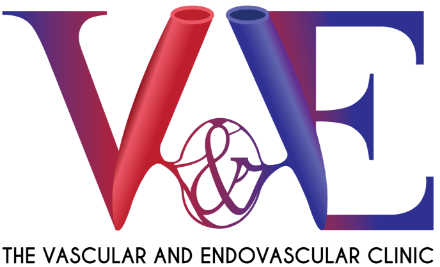Venaseal là một thủ tục y tế xâm lấn tối thiểu được sử dụng để điều trị chứng giãn tĩnh mạch. Nó là một loại hệ thống đóng dính nội tĩnh mạch sử dụng chất kết dính y tế để bịt kín các tĩnh mạch bị lỗi. Thủ tục này bao gồm việc đưa một ống thông vào tĩnh mạch và đưa chất kết dính để đóng tĩnh mạch. Venaseal là một giải pháp thay thế hiệu quả cho phẫu thuật cắt bỏ tĩnh mạch truyền thống và mang lại một số lợi ích, bao gồm thời gian hồi phục ngắn hơn và mức độ khó chịu tối thiểu.
Venaseal hoạt động như thế nào?
Venaseal hoạt động bằng cách sử dụng chất kết dính y tế để bịt kín các tĩnh mạch bị giãn. Trong quá trình thực hiện, một ống thông nhỏ được đưa vào tĩnh mạch bị ảnh hưởng dưới sự hướng dẫn của siêu âm. Ống thông đưa chất kết dính trực tiếp vào tĩnh mạch, làm cho các thành tĩnh mạch bịt kín lại với nhau. Việc đóng tĩnh mạch này ngăn chặn dòng máu chảy ngược và chuyển hướng nó đến các tĩnh mạch khỏe mạnh hơn gần đó.
Chất kết dính được sử dụng trong Venaseal là vật liệu tương thích sinh học được thiết kế đặc biệt cho mục đích này. Nó được cơ thể hấp thụ dần dần theo thời gian. Một khi tĩnh mạch bị ảnh hưởng được niêm phong, máu sẽ được chuyển qua các tĩnh mạch khỏe mạnh khác và tĩnh mạch bị giãn cuối cùng sẽ được cơ thể tái hấp thu.
Ưu điểm của Venaseal so với các phương pháp điều trị giãn tĩnh mạch khác hiện nay là gì?
Venaseal là một thủ thuật xâm lấn tối thiểu, không cần sử dụng nhiệt hoặc năng lượng laser như các phương pháp điều trị giãn tĩnh mạch khác. Nó cung cấp một lựa chọn an toàn và hiệu quả để điều trị chứng giãn tĩnh mạch, với mức độ khó chịu tối thiểu và thời gian phục hồi ngắn hơn so với các phương pháp phẫu thuật truyền thống.
Venaseal có một số ưu điểm so với các phương pháp phẫu thuật truyền thống để điều trị chứng giãn tĩnh mạch:
- Xâm lấn tối thiểu: Tĩnh mạch là một thủ thuật xâm lấn tối thiểu, không cần vết mổ lớn hoặc gây mê toàn thân. Nó chỉ liên quan đến việc chèn một ống thông nhỏ, dẫn đến ít chấn thương hơn cho các mô xung quanh.
- Không sử dụng năng lượng nhiệt hoặc laser: Không giống như một số phương pháp phẫu thuật truyền thống, Venaseal không sử dụng năng lượng nhiệt hoặc laser để điều trị chứng giãn tĩnh mạch. Điều này làm giảm nguy cơ tổn thương nhiệt đối với các mô xung quanh và giảm khả năng bị đau hoặc khó chịu sau thủ thuật.
- Nhanh chóng và hiệu quả: Venaseal là một thủ tục tương đối nhanh chóng có thể được thực hiện tại phòng khám của bác sĩ hoặc cơ sở ngoại trú. Thời gian điều trị thường ngắn hơn so với các phương pháp phẫu thuật truyền thống.
- Thời gian nghỉ dưỡng tối thiểu: Sau khi điều trị bằng Venaseal, hầu hết bệnh nhân có thể tiếp tục hoạt động bình thường ngay lập tức hoặc trong một khoảng thời gian ngắn. Thông thường không cần phải hồi phục kéo dài hoặc hạn chế nhiều hoạt động thể chất.
- Giảm nguy cơ biến chứng: Venaseal đã được chứng minh là có nguy cơ biến chứng thấp so với các phương pháp phẫu thuật truyền thống. Vì nó không liên quan đến việc tước hoặc loại bỏ tĩnh mạch bị ảnh hưởng nên sẽ giảm nguy cơ chấn thương dây thần kinh, chảy máu hoặc nhiễm trùng.
- Kết quả hiệu quả và lâu dài: Các nghiên cứu lâm sàng bao gồm các nghiên cứu từ Singapore như cơ quan đăng ký ASVS do bác sĩ Tang đứng đầu khi ông còn làm việc tại Bệnh viện Đa khoa Singapore, đã chứng minh rằng Venaseal là một phương pháp điều trị hiệu quả cho chứng giãn tĩnh mạch, với tỷ lệ đóng tĩnh mạch cao và cải thiện triệu chứng. Kết quả thường kéo dài, giúp giảm các triệu chứng giãn tĩnh mạch lâu dài.
Về mặt giảm triệu chứng, Venaseal đã được chứng minh là làm giảm hoặc loại bỏ đáng kể các triệu chứng như đau, nặng, sưng và mệt mỏi liên quan đến chứng giãn tĩnh mạch. Bệnh nhân thường trải nghiệm chất lượng cuộc sống được cải thiện và tăng sự thoải mái sau khi trải qua điều trị bằng Venaseal. Dữ liệu gần đây được công bố từ ASVS sau 3 năm cho thấy sự cải thiện bền vững về chất lượng cuộc sống và hiệu quả lâm sàng ở những bệnh nhân châu Á được điều trị bằng Venaseal đơn thuần để điều trị chứng giãn tĩnh mạch.
Những yếu tố nào có thể ảnh hưởng đến hiệu quả của Venaseal trong điều trị chứng giãn tĩnh mạch?
- Mức độ nghiêm trọng của chứng giãn tĩnh mạch: Mức độ và mức độ nghiêm trọng của chứng giãn tĩnh mạch có thể ảnh hưởng đến hiệu quả điều trị bằng Venaseal. Nhìn chung, Venaseal hiệu quả hơn trong việc điều trị các tĩnh mạch có kích thước nhỏ đến trung bình. Các tĩnh mạch lớn và quanh co có thể cần các lựa chọn điều trị thay thế.
- Tình trạng bệnh lý tiềm ẩn: Một số tình trạng bệnh lý nhất định, chẳng hạn như huyết khối tĩnh mạch sâu (DVT) hoặc bệnh động mạch ngoại biên (PAD), có thể ảnh hưởng đến sự thành công chung của điều trị bằng Venaseal. Điều quan trọng là phải đánh giá và giải quyết mọi tình trạng cơ bản trước khi tiến hành liệu pháp Venaseal.
- Cấu trúc giải phẫu và tĩnh mạch: Giải phẫu và cấu trúc của các tĩnh mạch bị ảnh hưởng có thể ảnh hưởng đến sự thành công của điều trị bằng thuốc Venaseal. Các tĩnh mạch khó tiếp cận hoặc có kiểu phân nhánh phức tạp có thể cần thêm chuyên môn hoặc phương pháp điều trị thay thế.
- Sự tuân thủ của bệnh nhân: Việc bệnh nhân tuân thủ các hướng dẫn chăm sóc sau thủ thuật là rất quan trọng cho sự thành công của điều trị bằng Venaseal. Làm theo lời khuyên của bác sĩ phẫu thuật mạch máu về hoạt động thể chất, mang vớ nén và các khuyến nghị khác có thể nâng cao đáng kể hiệu quả của thủ thuật.
- Phản ứng của cá nhân đối với việc điều trị: Mỗi cá nhân phản ứng khác nhau với các can thiệp y tế. Mặc dù nhìn chung Venaseal đã cho thấy tỷ lệ thành công cao, nhưng sự khác biệt của từng cá nhân trong quá trình lành vết thương và phản ứng của mô có thể ảnh hưởng đến kết quả cuối cùng.









